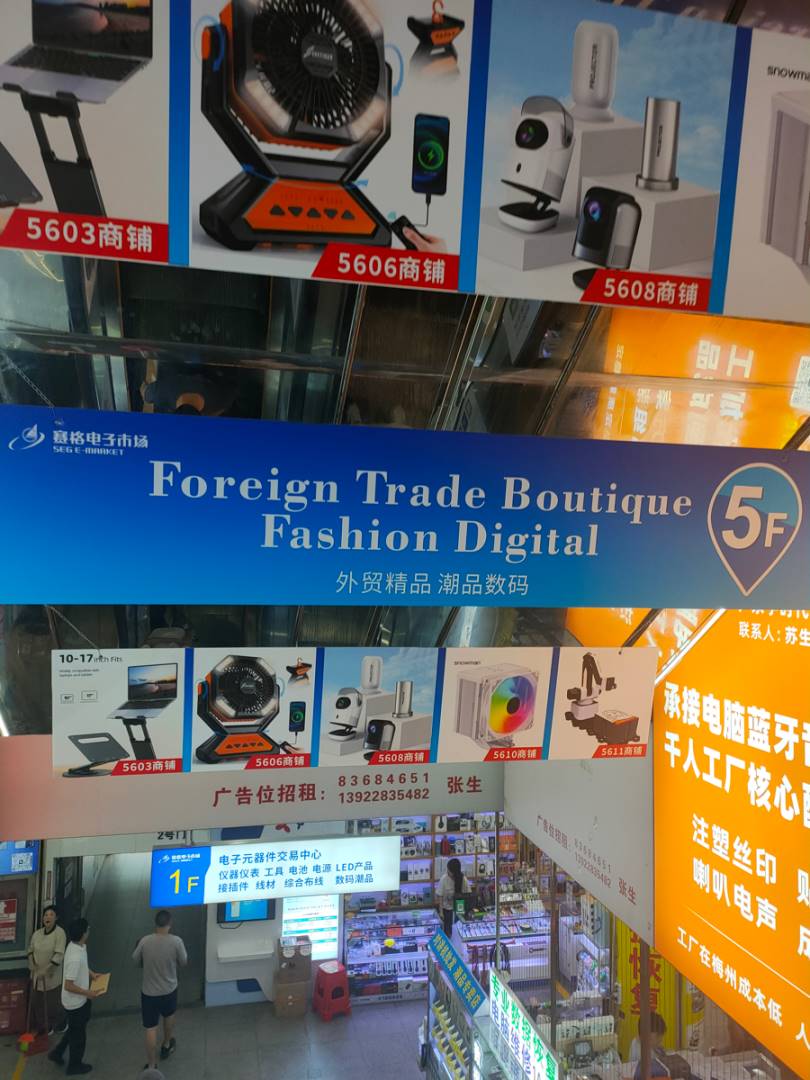Only a few merchants indicated that they would use or attempt to use stablecoins for transactions.
Written by: Cao Yuan, 21st Century Business Herald
In the current foreign trade business, more and more merchants are noticing the use of stablecoins for cross-border payments.
Earlier, a reporter from the 21st Century Business Herald visited Yiwu, known as the "world's largest small commodity distribution center," to investigate the use of stablecoins among merchants. The findings revealed that most merchants had not heard of stablecoins and did not understand them; some merchants raised questions about their compliance and costs; only a few merchants supported receiving payments in stablecoins.
In Shenzhen Huaqiangbei, known as China's "electronic first street," there is a large market for electronic components, gathering numerous suppliers and buyers from around the world.
Recently, the reporter also visited five shopping malls in Huaqiangbei, including SEG Electronics Market, SEG Communication Market, Modern Window Digital Plaza, Yuanwang Digital Mall, and Longsheng Accessories City, conducting interviews with dozens of merchants across different malls. The reporter also consulted over 20 Huaqiangbei merchants online to explore their use of stablecoin transactions: only a few merchants indicated they would use or attempt to use stablecoins for transactions, while most merchants stated they were not familiar with stablecoins.
Stablecoins refer to cryptocurrencies that are pegged to the value of fiat currencies. Taking the largest stablecoin, USDT (commonly referred to as "U"), as an example, 1 USDT is pegged to 1 US dollar. This year, driven by legislative progress in the United States and Hong Kong, the stablecoin sector has seen a global surge.

Shenzhen Huaqiangbei, known as China's "electronic first street" (Photo / Cao Yuan)
A Few Merchants Express Interest in "Testing the Waters"
During the visits by the 21st Century Business Herald reporter, a few merchants in Huaqiangbei expressed that they would use or attempt to use stablecoins for transactions. One merchant dealing in 3C electronic products said, "I know someone who is trading with stablecoins. I would consider using stablecoins for overseas payments, but I haven't completed any transactions yet."
In addition to offline visits, the reporter randomly consulted over 20 Huaqiangbei merchants on online platforms, of which two indicated they could accept stablecoins. Another stablecoin exchanger told the reporter online, "Some 'foreigners' ask if they can pay with stablecoins because it's convenient."
Most of the interviewed Huaqiangbei merchants stated, "We are not clear about what stablecoins are." Even if some merchants had heard of stablecoins, they believed it had no relation to their daily operations.
One merchant specializing in hair dryers said, "Currently, many foreigners still primarily use cash or Alipay for shopping. My most significant recent overseas remittance was $30,000, which someone helped me transfer via Alipay."
Another merchant dealing in CPUs said, "We only use fiat currency and have never used stablecoins." A merchant selling graphics cards asked the reporter, "Are stablecoins the same as Bitcoin? What use do they have for me?"
The reporter consulted relevant staff at two malls in Huaqiangbei, who also stated, "As far as I remember, it seems that no merchants use stablecoins; I will look into it further."

SEG Plaza in Huaqiangbei (Photo / Cao Yuan)
Even if a few merchants are interested in using stablecoins for payments, the next step of "liquidating" the stablecoins they receive remains a gray area, generally done through so-called "U merchants." The term "U merchants" refers to virtual currency exchangers or OTC (over-the-counter) traders in the cryptocurrency space. They primarily earn profit margins by providing exchange services between stablecoin USDT (commonly referred to as "U") and fiat currency in the virtual currency trading market.
The reporter's investigation found that different "U merchants" set various transaction thresholds for "receiving U," mainly focusing on "large transactions." One "U merchant" directly told the reporter, "We don't do small transactions for 'receiving U'; we only do bulk transactions, starting from 50,000 U in cash." (This means starting from 50,000 stablecoins USDT, paid in cash). However, another "U merchant" indicated that the reporter could come for offline transactions if they had a need to "cash out U."
Regarding exchange rates, taking USDT as an example, 1 USDT is pegged to 1 US dollar, so most "U merchants" will offer a slightly lower rate based on the day's exchange rate for "receiving U," and some "U merchants" may charge a certain fee. "We buy lower than the market price and sell higher than the market price," one "U merchant" explained their "receiving U model" in simple terms. Another "U merchant" calculated, "I don't have a price list; it's a uniform price. For example, if I receive 100 stablecoins worth $100, I can give you $97 in cash for the exchange, and the fee for each coin is 0.03 yuan (RMB)."
As for who the downstream "U merchants" are and who will "take over" the stablecoins they receive, the aforementioned "U merchant" told the reporter, "Some of us will also sell them on exchanges, and some peers will also want to buy them."
Need to Guard Against Compliance Risks
Some merchants are noticing stablecoins and even using them for foreign trade?
Tianyang Technology, referred to as a "stablecoin concept stock," summarized in response to investor inquiries that there are three main issues: first, the uncertainty of the arrival time, which depends on the design of the counterparty's bank link in SWIFT; second, the lack of transparency in fees, which also depends on the intermediary banks involved; third, the transaction status, although SWIFT has launched services to pay for transaction status inquiries, currently, the progress of funds is unknown to both the remitting and receiving parties.
Stablecoins have certain advantages in cross-border payment settlements. "The biggest difference between stablecoins and other virtual currencies is that they are pegged to fiat currencies, making them relatively stable. This reduces their financial investment attributes and highlights their fund settlement attributes," a person from a bank's transaction banking department told the reporter. "Stablecoins bypass the traditional SWIFT banking system and achieve peer-to-peer transactions on the blockchain network. However, they are currently illegal in mainland China."
It is important to note that using stablecoins for foreign trade settlements in China faces compliance risks.
"Currently, using virtual currencies for cross-border payments in China is definitely not allowed," emphasized Zeng Jie, a senior partner at Guangqiang Law Firm and director of the Illegal Fundraising Defense and Research Center. Recently, relevant departments in Shenzhen and Beijing also issued risk warnings: beware of illegal fundraising under the guise of stablecoins and other names.
Furthermore, regarding the "receiving U and cashing out U" transactions, Zeng Jie believes this is essentially a qualitative issue regarding virtual currency trading itself. If an individual's virtual currency trading investment complies with public order and good customs, it is merely personal investment trading, not related business activities. The transaction itself is a trade of virtual goods, which is protected by law.
免责声明:本文章仅代表作者个人观点,不代表本平台的立场和观点。本文章仅供信息分享,不构成对任何人的任何投资建议。用户与作者之间的任何争议,与本平台无关。如网页中刊载的文章或图片涉及侵权,请提供相关的权利证明和身份证明发送邮件到support@aicoin.com,本平台相关工作人员将会进行核查。



